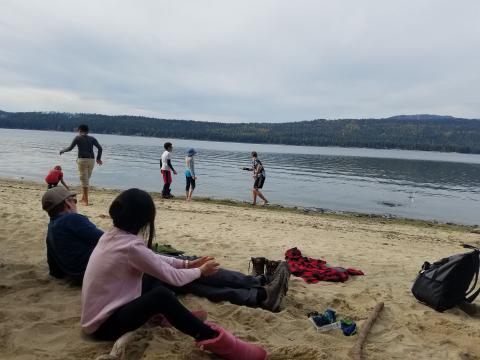Hey there, my name is Hannah Stewart, I am a graduate student here at MOSS. This Summer I am creating a small series of activity lessons for children ages four through ten, based around the seven principles David Sobel outlines in Childhood and Nature: Design Principles for Educators. These principles are ways for children to engage with the nature around them while learning and practicing skills. These seven principles allow children in preschool and up to explore, imagine, identify colors and differences, as well as create outdoors.
The Seven Principles (and linked lesson plans!):
- Adventure
- Fantasy and Imagination
- Animal Allies
- Maps and Paths
- Special Places
- Small Worlds
- Hunting and Gathering
These principles are easily combinable in activities I love to do with students of all ages. They provide multiple ways, through adventure and exploration, for children to engage in nature while practicing vital skills, children can learn to identify plants, animals and differences between them. Nature provides abundant opportunities to imagine and create, from stories about the animals and plants they engage with to creating small homes for animals and forts for themselves. Through exploration, children can learn to identify edible plants and enjoy a snack while exploring in their small world in the woods or backyard.
It can be as simple as asking your child to go outside and find different textures and colors out in nature. Over the next seven weeks I will post an activity to go with each principle. Students will use paint swatches to discover the different colors in nature. They will explore the textures and shapes of the outdoors.
I often ask for something soft, something fuzzy, something round, something triangular, something purple and so on. For colors I have given students different colored paint swatches and asked them to go find an object in the forest or meadow that matches. Once your child has found these items, have them create a picture or map out of them and then tell you the story of these items. I like to call this activity a nature scavenger hunt with an art show and tell.
Reference: Sobel, D. (2008). Childhood and nature: Design principles for educators. Stenhouse Publishers.
